El Divo Returns! Cherry Blossoms, History, and Very Droll Commentary!
Serendipity and one not-so-bright photographer make a little magic.
Greetings and salutations. It is I, El Divo.
I have returned.
Of course, I have.
Did you see how many likes the first newsletter I narrated got? Almost eighty. That’s way more than that dragon in Bangkok got. I even bested Jane Austen, which is no mean feat given how many movie adaptations of her books there have been.
As they say in the business, a star is born.
Speaking of Miss Austen, I’m partial to the version of Pride and Prejudice with Keira Knightley because, let’s be honest, the glamorous and sublime Ms. Knightley and I have much in common.
But enough about me.
It’s time to talk about this month’s Michael Takes Too Many Pictures newsletter, which has a touch of serendipity about it.
That’s because Michael, bless his baseball cap, recently blundered into a spectacular display of cherry blossoms in Seattle.
No, he didn’t plan for it.
He merely returned to Seattle for a visit with family and friends, nary any idea that it was cherry blossom season, only to stumble straight into a fantasy of pale pinks, soft whites, and endless confetti showers of floral bliss.
Perhaps that’s a bit over the top, but the cherry blossoms were truly spectacular.
Naturally, once Michael realized his good fortune, he dragged me all over Seattle trying to photograph every cherry tree.
I can’t tell you how many times we stood in the middle of a street, Michael obliviously trying to frame the perfect shot and me praying to the Android gods that I didn’t end up cracked and broken in the grill of an SUV.
I’ll say this for my boy: he is dedicated to his craft.
On to our phototour!
Let’s start with the legendary Yoshino cherry trees of the Quad, short for the Liberal Arts Quadrangle, on the University of Washington campus.
The UW’s trees were most likely planted in a nearby botanical garden in the 1930s and then moved to the UW campus in the 1960s. This puts them in their nineties, old but still vibrant and glorious.
Basically, they are the Rita Moreno, Carol Burnett, and Jane Fonda of cherry blossom trees.
The trees blossom between mid-March and early April, attracting hordes of Instagram influencers seeking validation through likes, comments, and eggplant emojis.
Thankfully, El Divo cares naught about that. Michael, on the other hand…
The cherry blossoms didn’t only attract Instagram influencers.
Families posed for family portraits, UW athletic teams posed for yearbook photos, and a drag queen looked fabulous as she struck a pose.
And then there was Michael demonstrating his enthusiasm for … something. The crowds? His brother-in-law’s awesome shirt?
Cherry blossoms, or sakura if we’re being properly reverent, are Japan’s gift to the concept of fleeting beauty.
The Japanese even have a word for the practice of sitting beneath the blossoms and contemplating their transient nature: hanami.
I tried to share this concept with Michael, but all he said was, “You mean just sitting there and not taking any photos? ARE YOU CRAZY?”
Someone here is crazy.
Did you know the famous cherry trees that stand along the Potomac River in Washington, D.C., first arrived in Seattle?
They arrived as saplings on board a ship from Tokyo to the Emerald City — the closest major U.S. port to Japan — then put into rail cars and sent to D.C. in 1912 as a flowering envoy from Japan to the United States.
Here at Michael Takes Too Many Pictures, we provide gorgeous photos and snarky commentary and actual education!
Here’s a bit more cherry blossom history for you.
In 1885, Eliza Ruhamah Scidmore, a very unusual woman, proposed planting trees in Washington, D.C.
She was an accomplished journalist who became the first woman to sit on the governing board of the National Geographic Society. As a travel writer, Eliza ventured into the Alaska Territory and became one of the first tourists to visit Glacier Bay.
El Divo might not want Ms. Scidmore to adjust his aperture, if you get my drift, but he knows a badass woman when he sees one.
The iconoclastic Ms. Scidmore also visited Java, China, India, and Japan, where she fell in love with the cherry blossom trees.
Upon returning to the U.S., she approached the U.S. Army Superintendent of the Office of Public Buildings and Grounds with the suggestion to plant cherry trees along the Potomac.
He said "Neanche morto," which means “over my dead body,” as we say back in Italy. Every new superintendent for the next 24 years also told Ms. Scidmore to take a hike. It wasn’t until she wrote to First Lady Helen Taft in 1909 that the idea finally took root.
Thanks to Ms. Scidmore's vision, cherry trees bloomed in D.C. three years later.
El Divo has nothing but admiration for that kind of determination.
I’m not going to state definitively that the very unconventional Ms. Scidmore, incorrectly identified by the National Park Service as Mrs. Scidmore, was a lesbian.
But if it looks like a cherry blossom tree and blooms like a cherry blossom tree, then it’s probably a lesbian, er, cherry blossom tree.
Poor Seattle had to wait almost twenty more years to get its own cherry trees. But the wait was worth it, as in 1930, Japan sent four thousand flowering trees to the city.
Another 95 years passed before Michael spent a week taking the most spectacular photos of Seattle’s cherry trees ever recorded.
(Note: Michael said he would trade me in for the latest iPhone if I didn't say this. I assume it was an idle threat, but it's best not to take chances when dealing with an ego of this proportion.)
Here’s another interesting cherry blossom fact to impress your friends: The petals are edible and taste like a delicate blend of rose, cherry, and green tea.
The flavor is very subtle, much like El Divo himself.
The petals are sometimes pickled and used in sweets and teas. There’s also a cherry blossom Pepsi for sale in Japan, which I refuse to try because El Divo has standards.
The keen-eyed among you — mostly everyone but Michael — have likely noticed that cherry blossoms can be pink or white.
Some are a blushing pink like a debutante’s first flirtation on an episode of Bridgerton. Others arrive clad in an innocent white while hiding secrets, also like an episode of Bridgerton.
El Divo likes Bridgerton? Of course, he does. Have you not seen Jonathan Bailey? That man is finer than a perfectly cut piece of sashimi at the best Tokyo sushi bar.
Here’s the thing about cherry blossoms: they never stay. Indeed, their time is brief. That’s the point.
Mono no aware, the Japanese call it — an awareness of impermanence. The heartbreak of beauty that doesn’t last. Which is why Michael’s accidental timing was such a miracle. He showed up, and for a brief, glittering moment, everything aligned.
Serendipity.
And now the cherry blossom season is over.
But Michael and I were there. We saw the beauty and appreciated the mono no aware.
Well, at least I did. Michael was still taking pictures.
That’s okay, though — otherwise, we wouldn’t be able to share our moment of serendipity with you.
If you enjoyed this newsletter, I would appreciate your sharing it with someone you think might also like it.
Michael Jensen is a travel writer, amateur photographer, and novelist. Check out his other newsletter about his travels at BrentAndMichaelAreGoingPlaces.com.


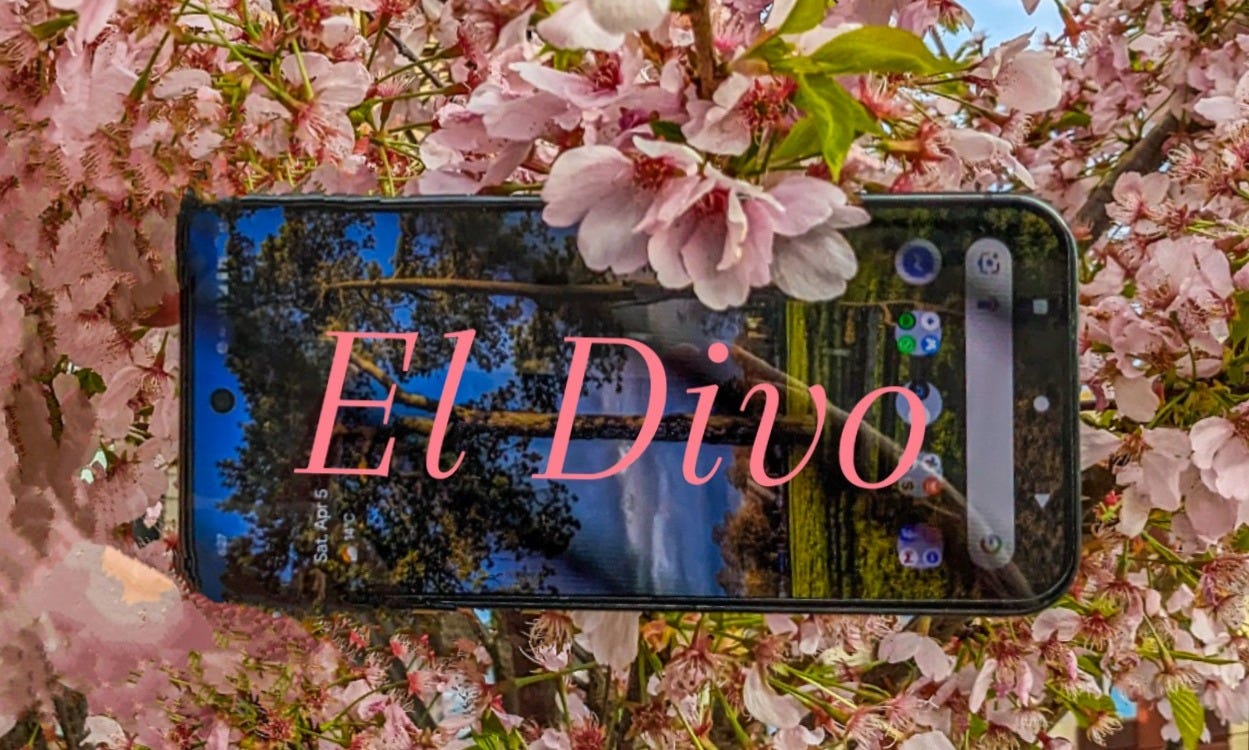
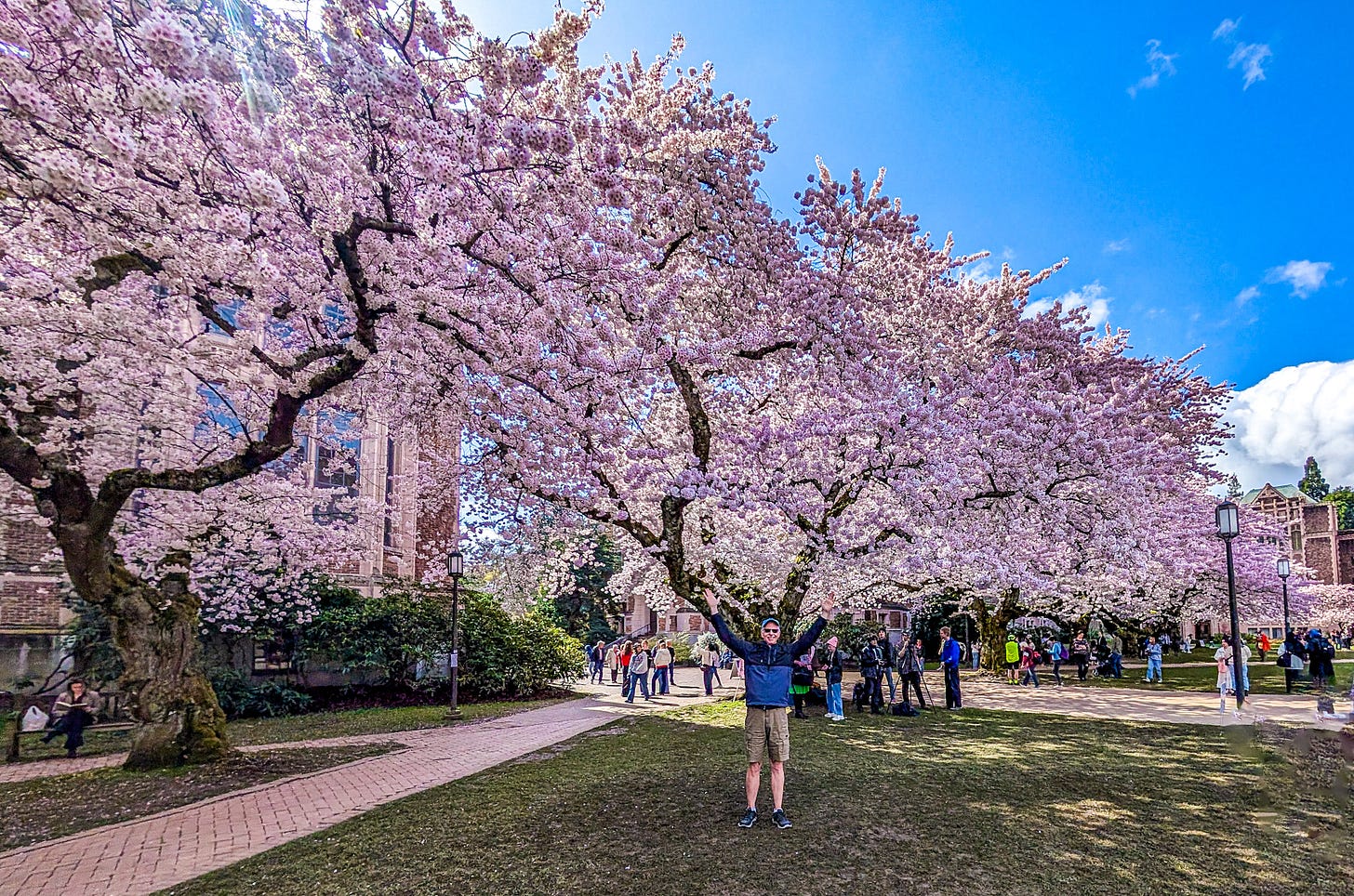
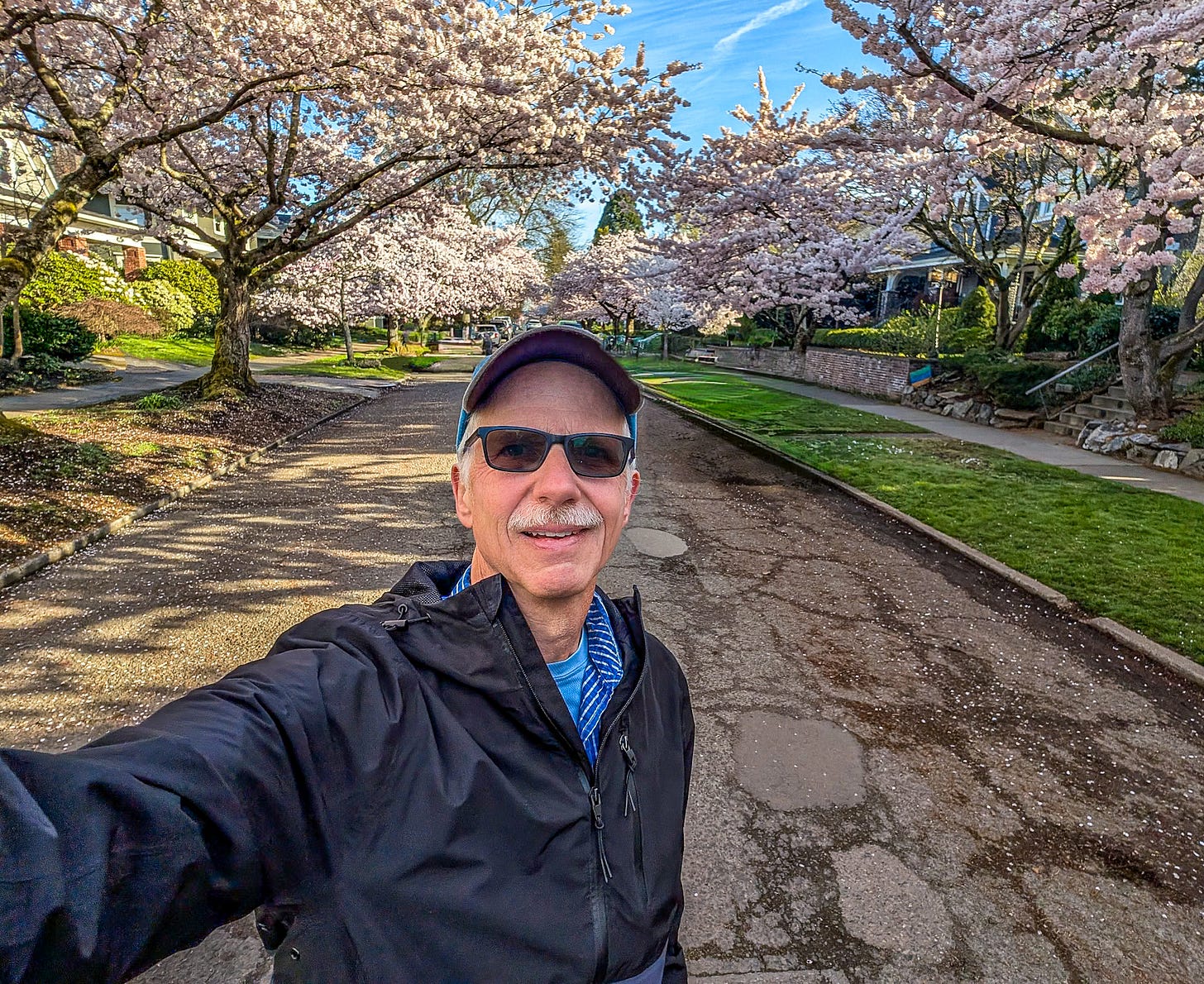
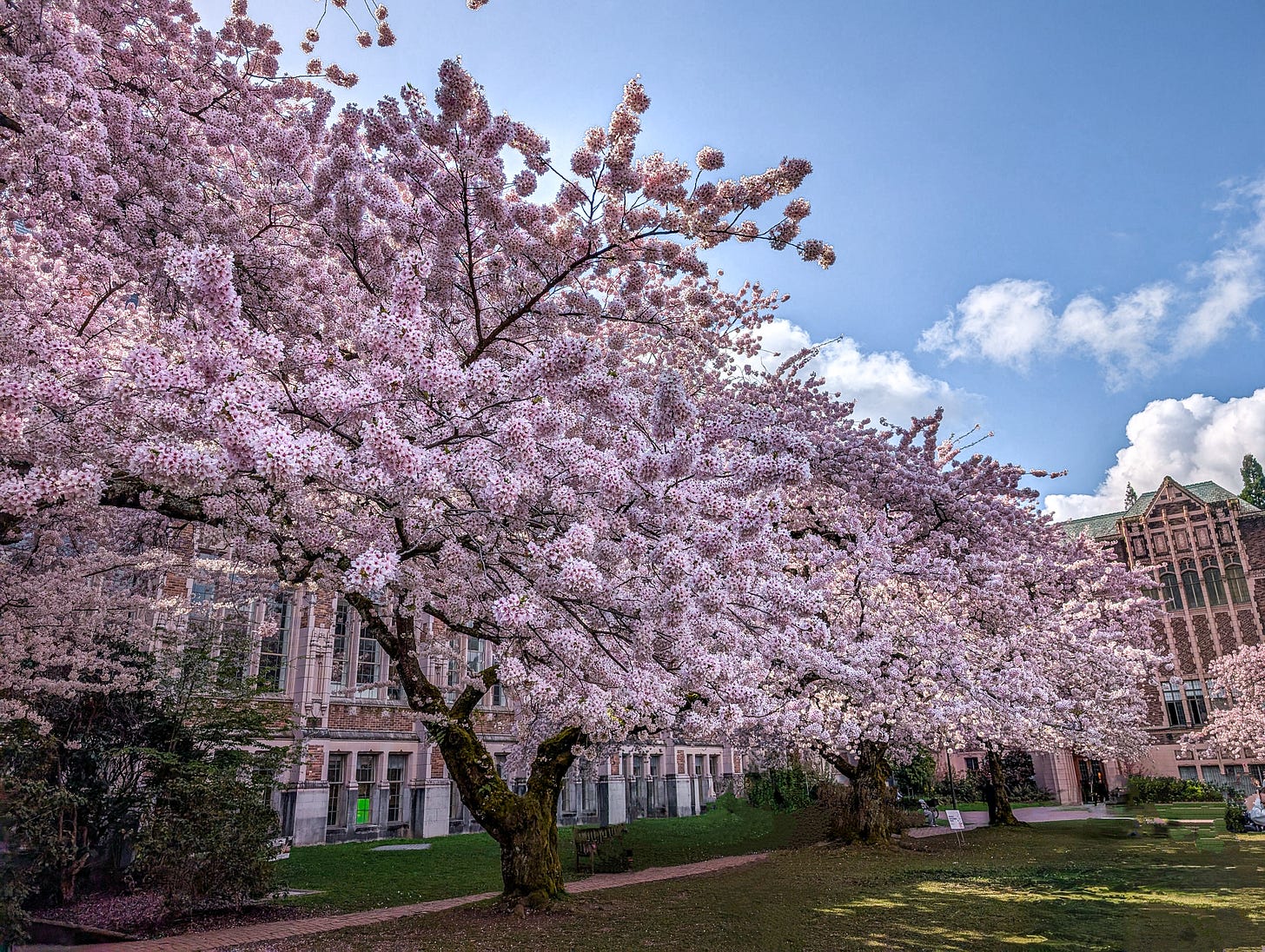
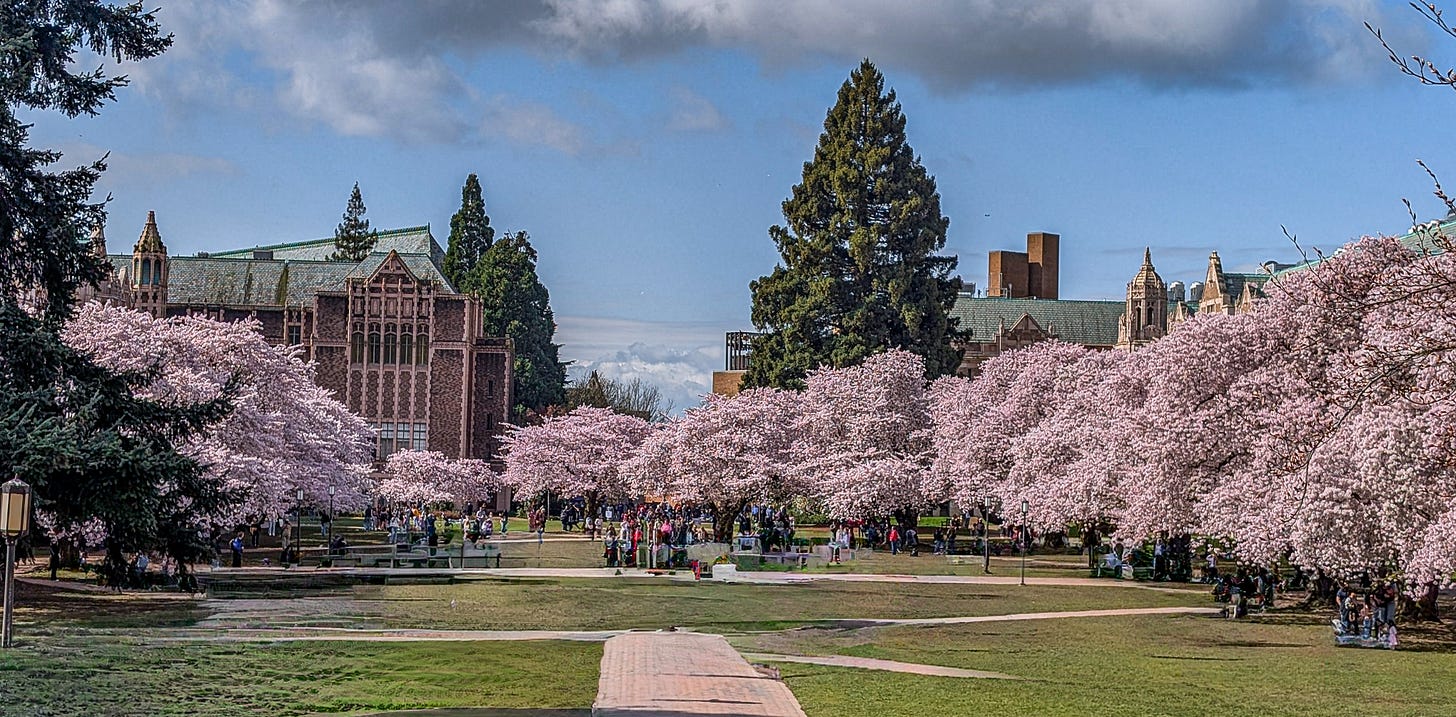
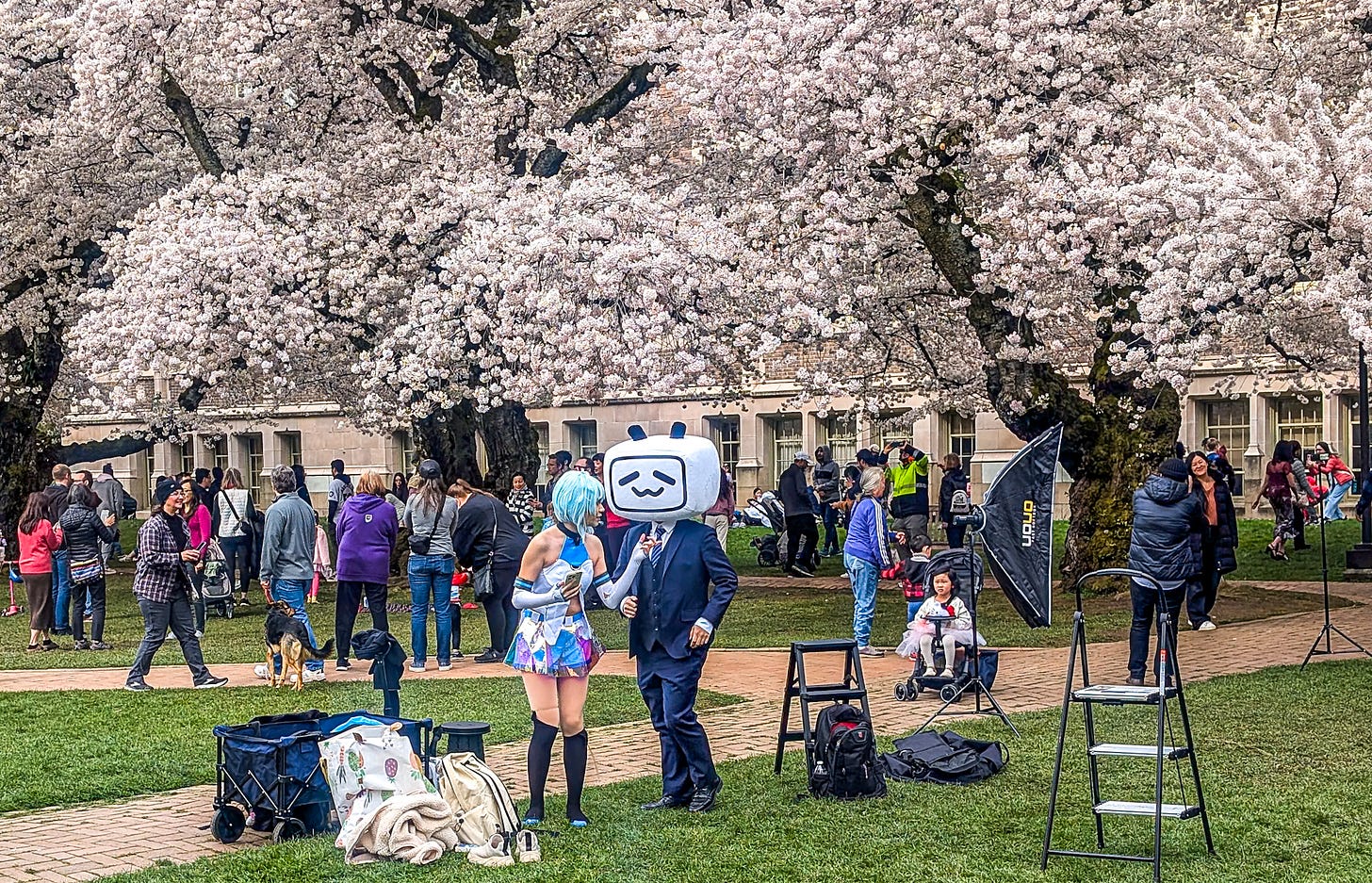
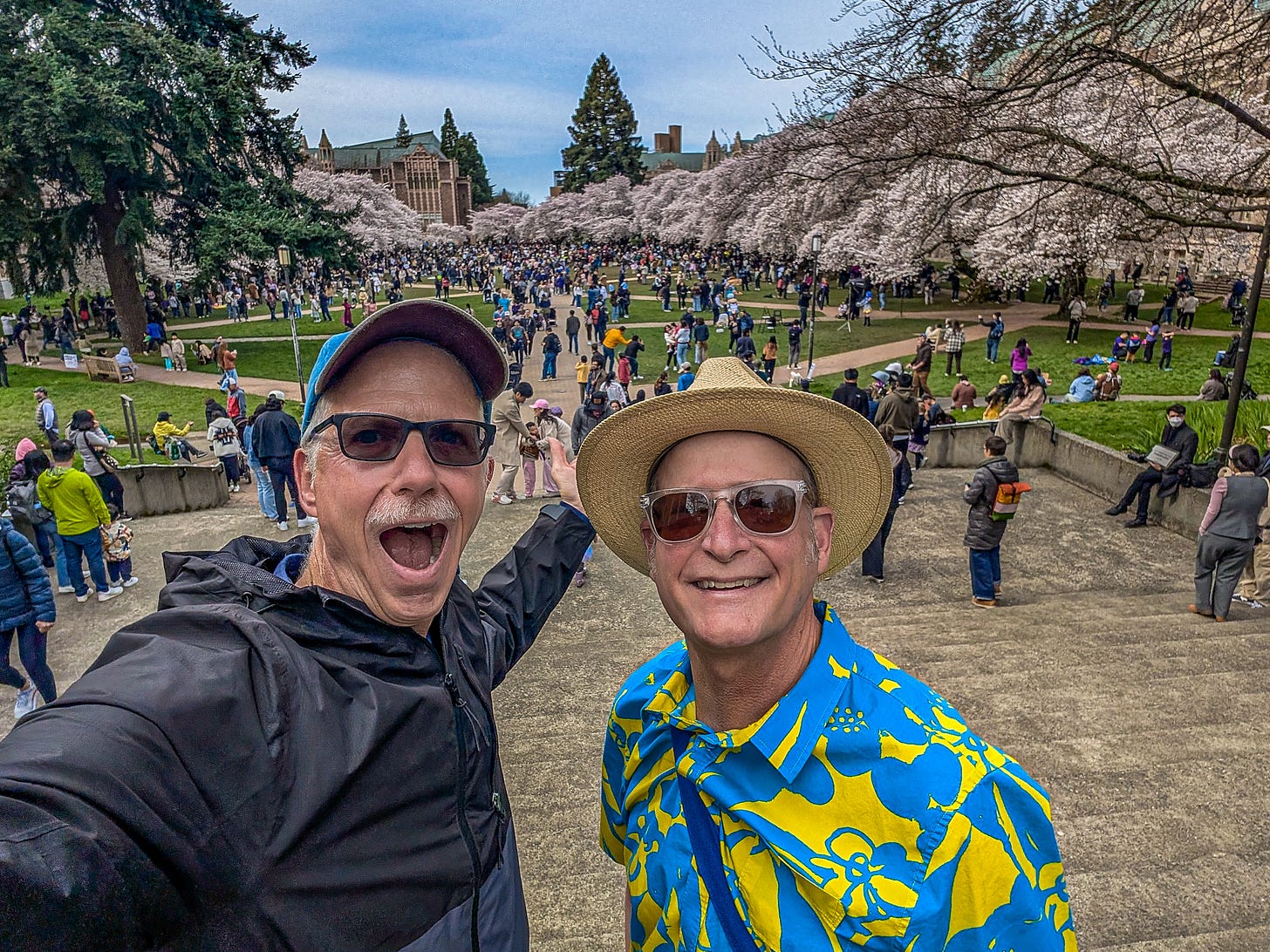
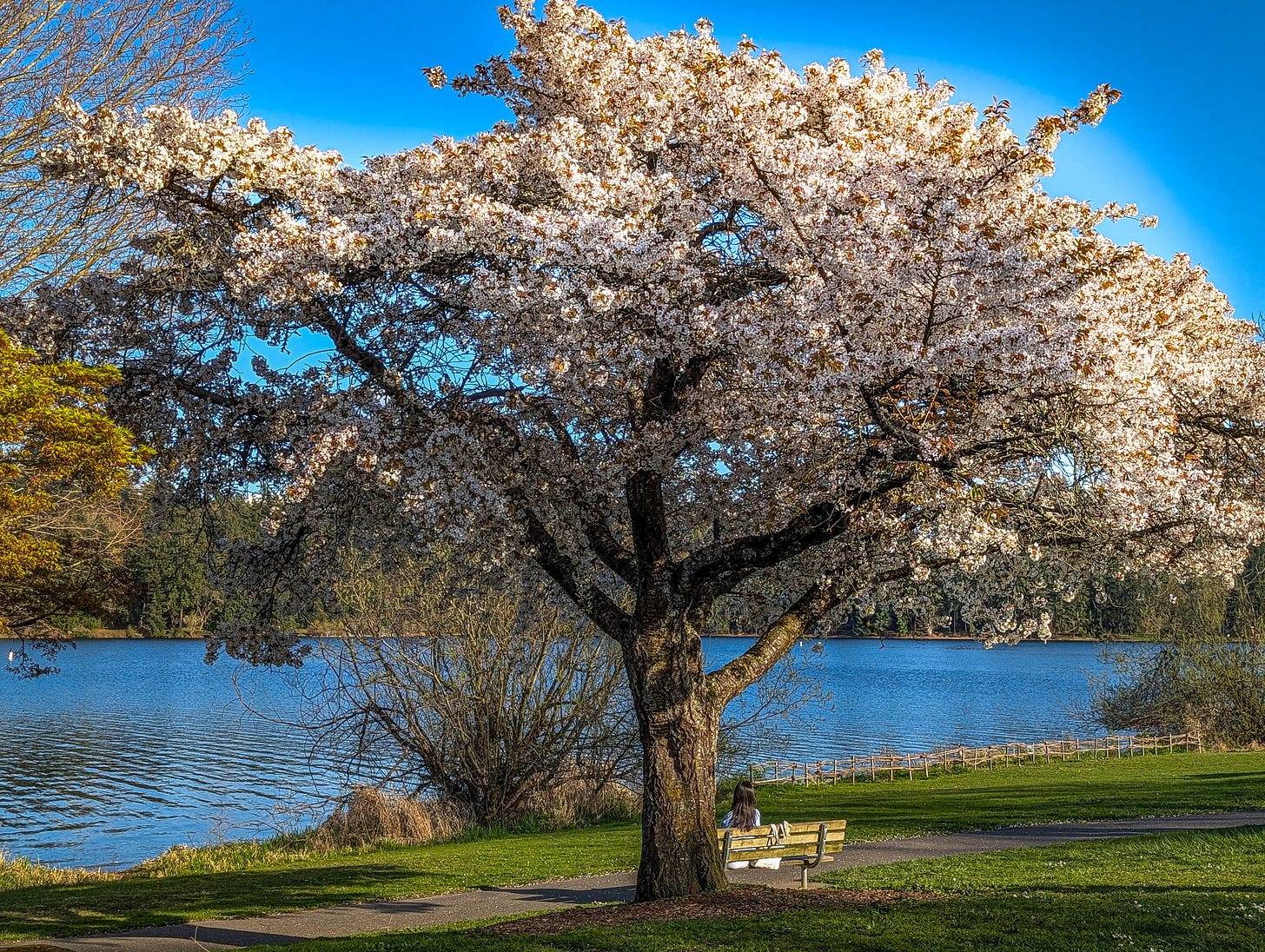
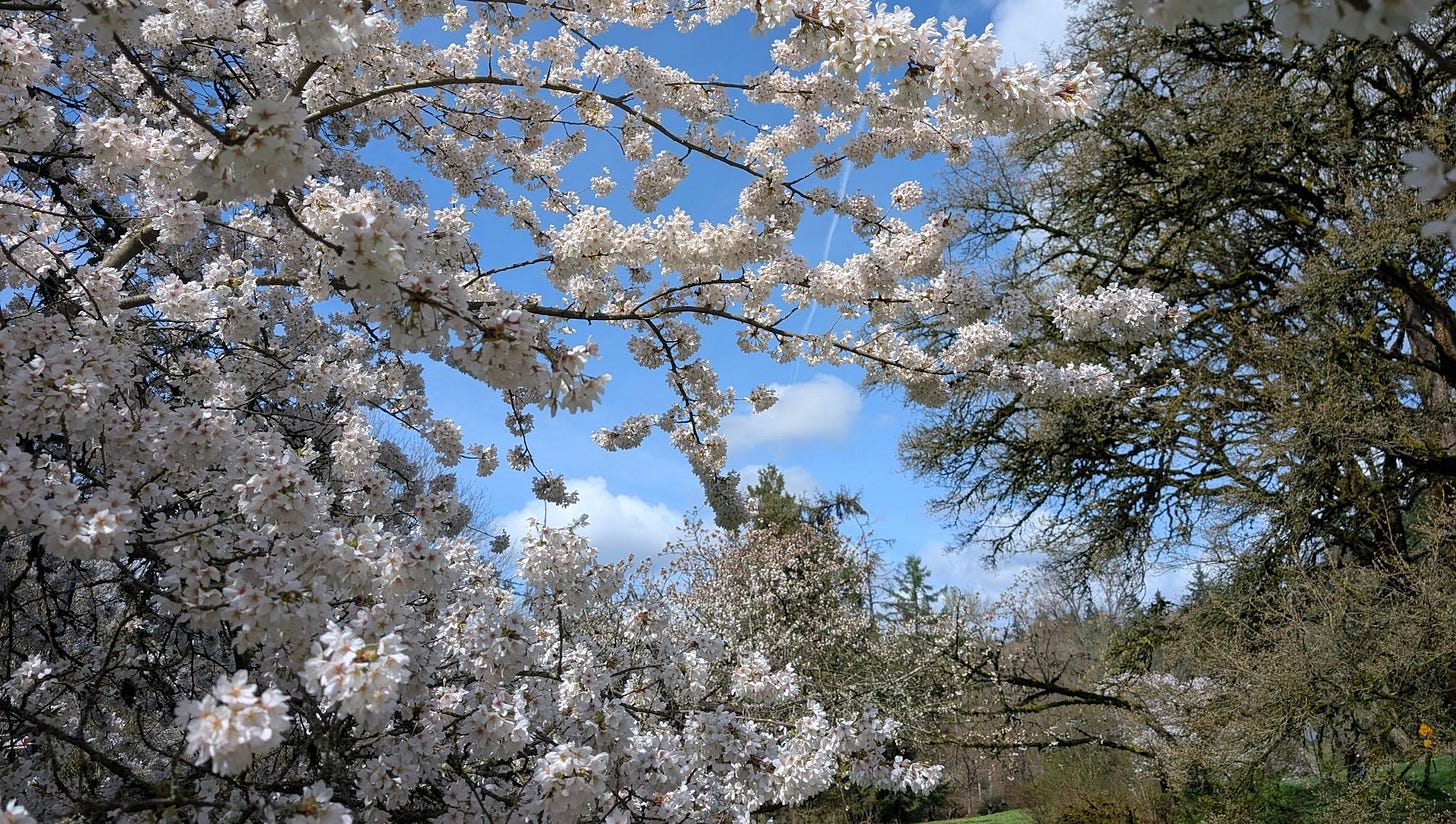
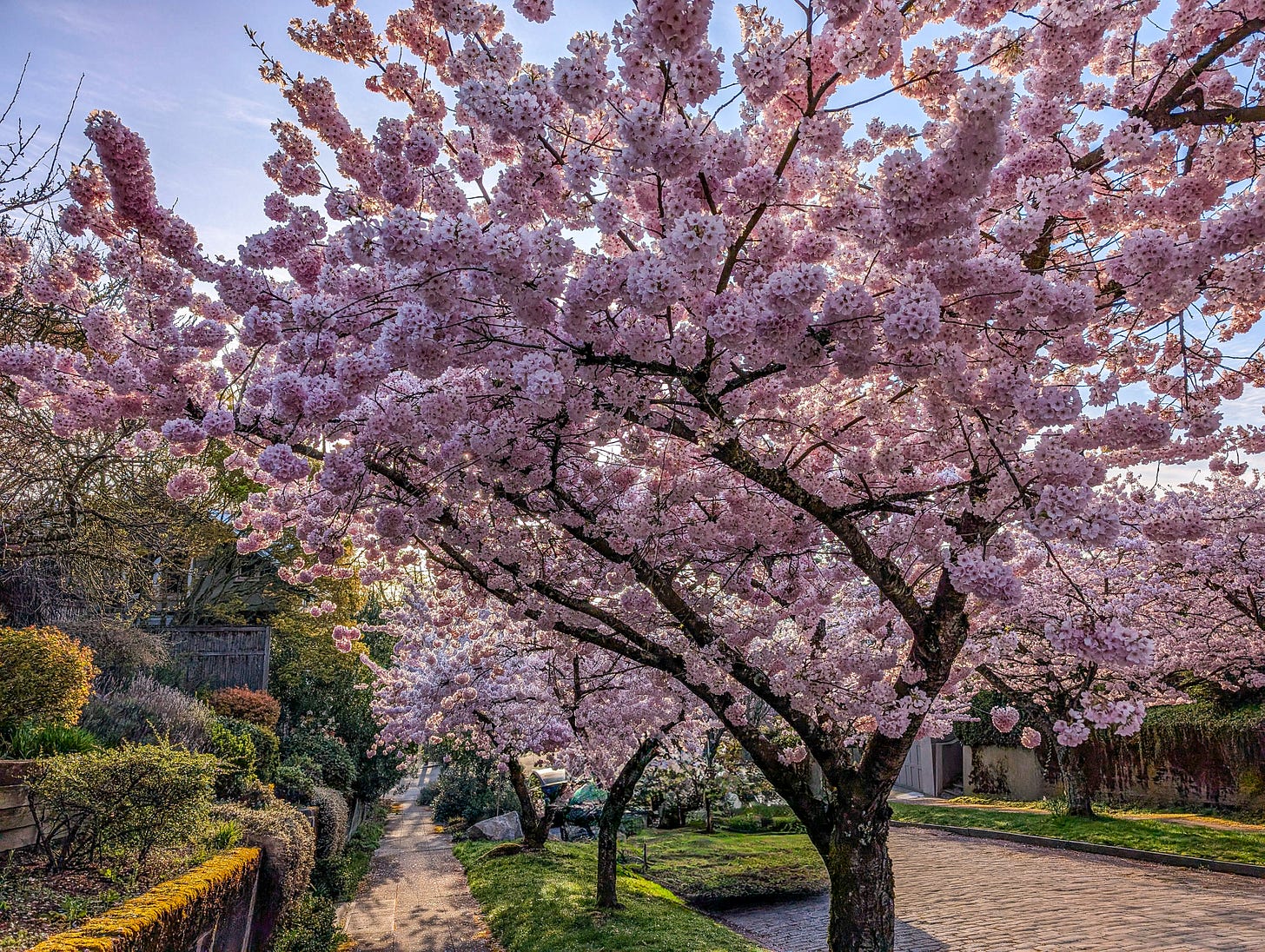
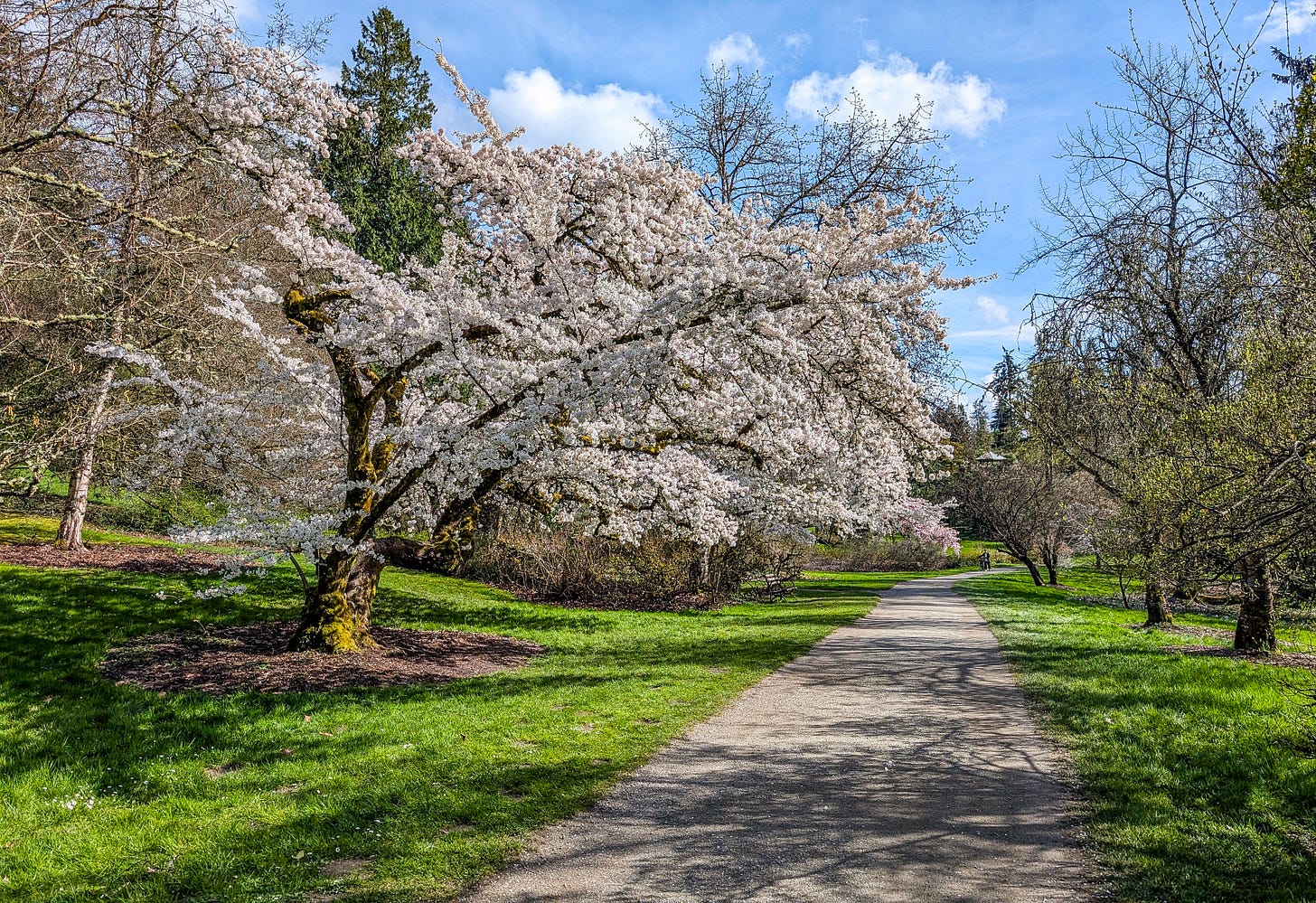
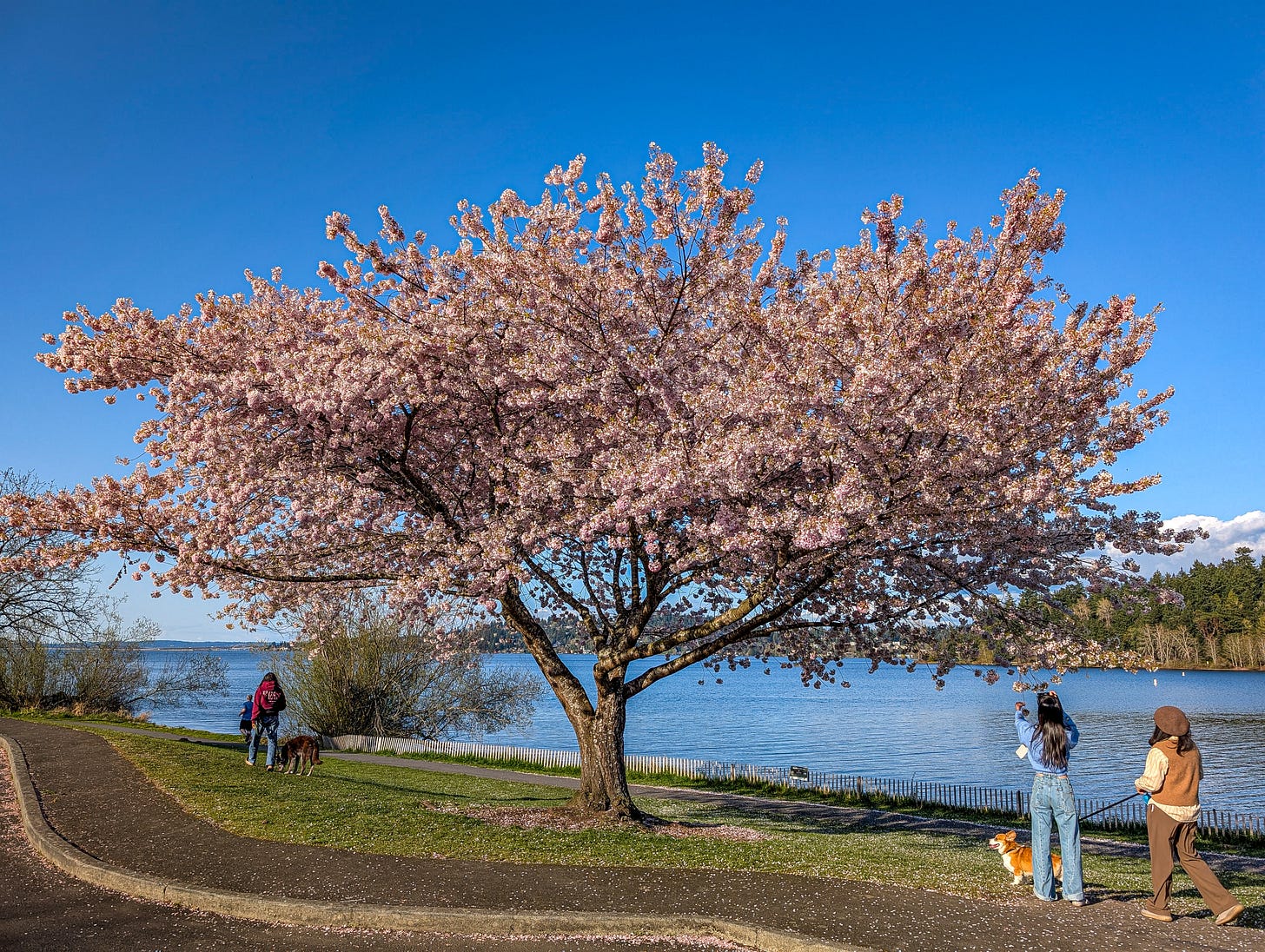
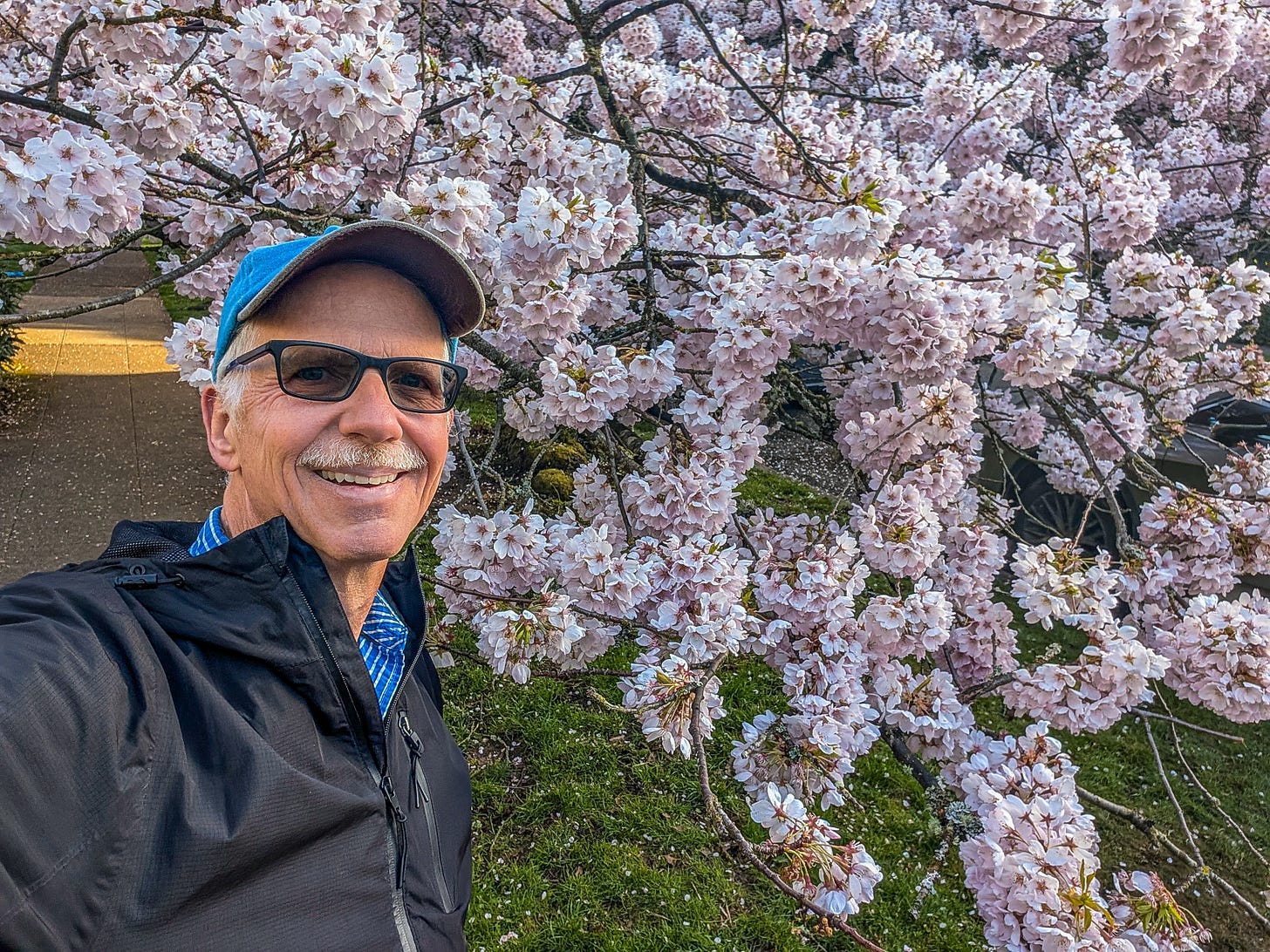
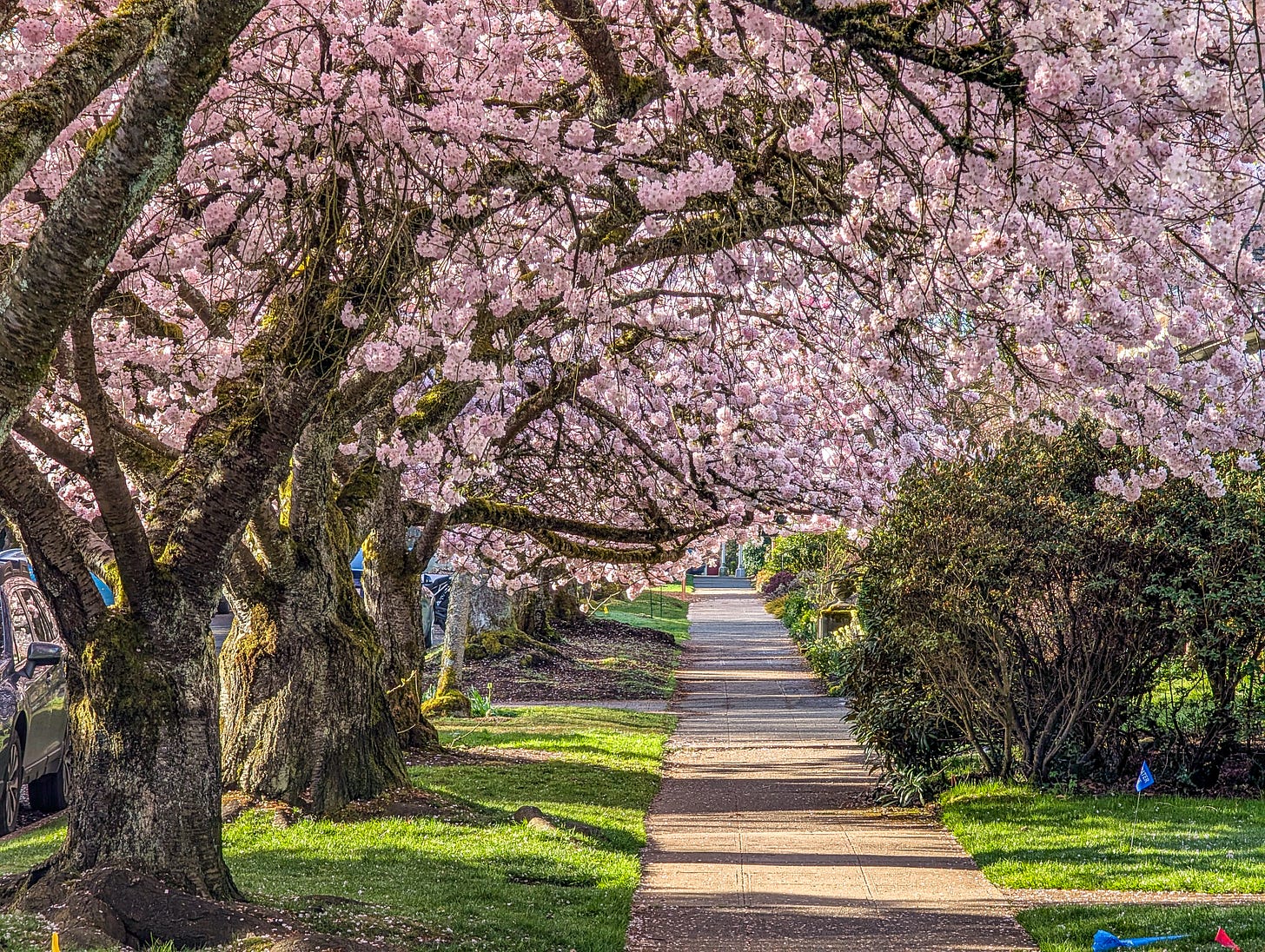
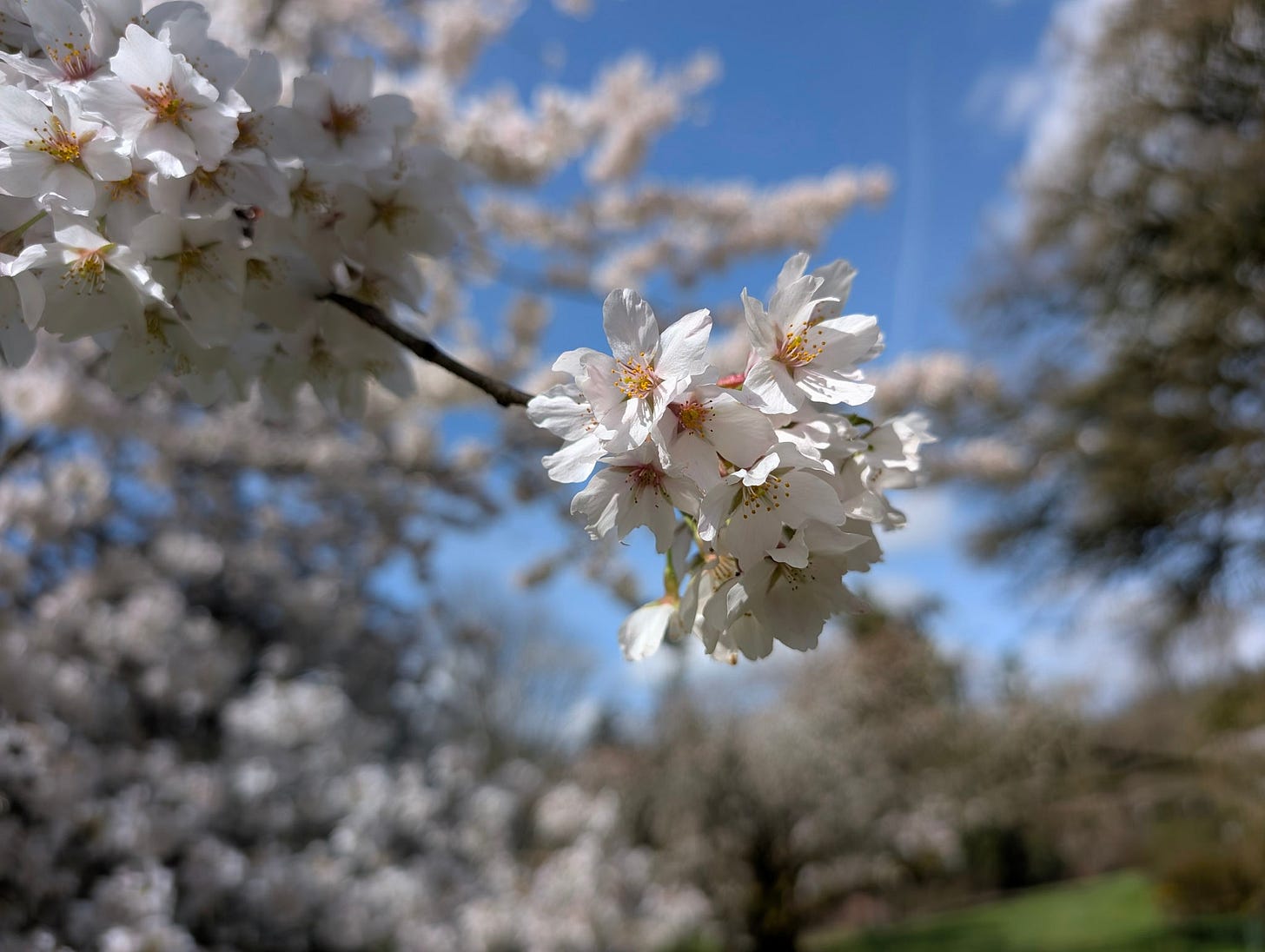
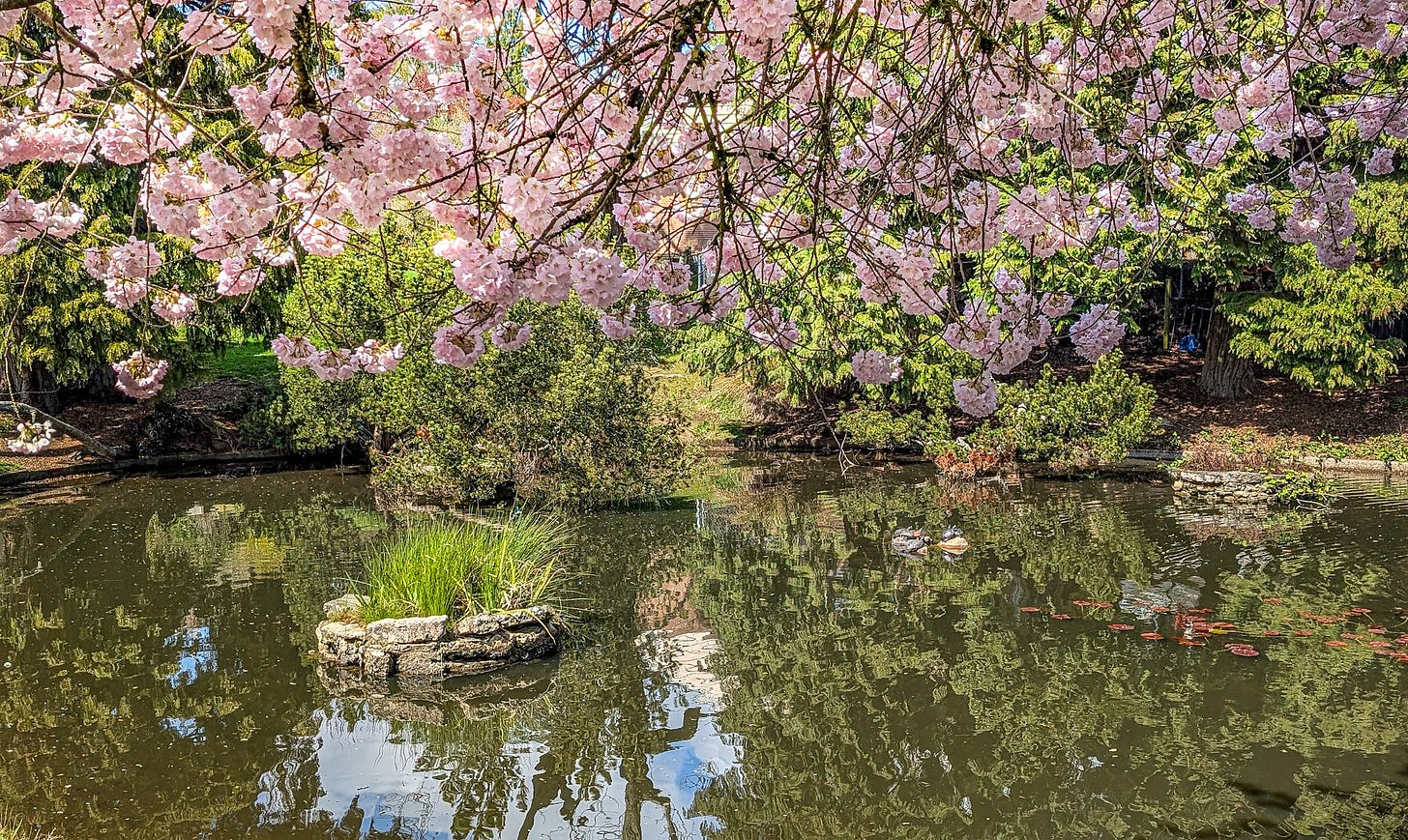
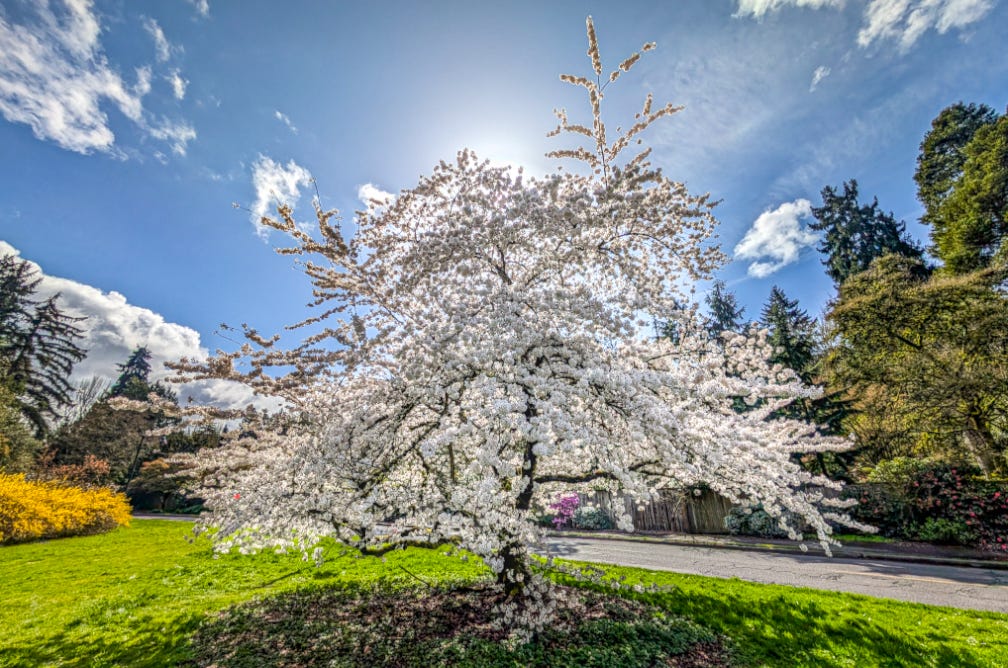
Thank you for the lift of beauty you hav given my day!
Utterly fantastic photographs. Keep snapping away!
And the El Divo comments are great.